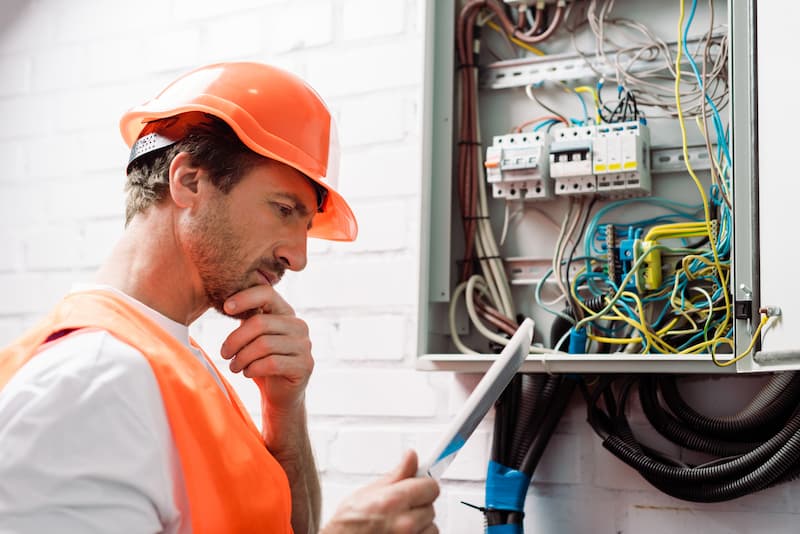Dedicated technical support for electrical industry innovations.
Dedicated technical support for electrical industry innovations.
Blog Article
Leading Tips for Effective Electric System Troubleshooting
Fixing electric systems calls for a systematic technique, based in a detailed understanding of electric principles and safety protocols. The nuances of effective fixing prolong past mere technological knowledge; understanding how to document searchings for and focus on safety can considerably affect results.
Understand the Essentials
Recognizing the essentials of electric systems is vital for reliable troubleshooting, as a strong foundation permits technicians to diagnose and fix issues more effectively. An extensive grasp of electric concepts, such as voltage, present, resistance, and power, is crucial in identifying the origin of problems. Voltage is the electric prospective distinction that drives current via a circuit, while resistance opposes the flow of current, influencing the overall capability of the system.
Experience with circuit components, consisting of resistors, capacitors, diodes, and changes, is likewise critical. Each element plays a distinctive role in circuit habits and can impact performance when malfunctioning. Additionally, understanding series and identical circuit configurations is essential, as these arrangements affect the circulation of voltage and existing within the system.
In addition, expertise of safety protocols is indispensable. Service technicians must understand potential risks, such as shock and short circuits, to apply secure troubleshooting techniques. By understanding these foundational principles, professionals enhance their ability to conduct reliable diagnostics and repair work, ultimately causing improved efficiency and reliability of electrical systems. This foundational understanding is the keystone of successful repairing endeavors.
Gather Necessary Equipment
Efficient troubleshooting of electrical systems requires the right set of devices to identify and fix concerns properly. A fully equipped professional can dramatically boost effectiveness and effectiveness in recognizing problems. Crucial tools include a multimeter, which measures voltage, present, and resistance, permitting exact analyses of electric components. Clamp meters are additionally useful for measuring existing without detaching the circuit, making sure security and benefit.
In addition, insulated hand tools such as screwdrivers, pliers, and cord strippers are essential for safely controling electrical links. It is likewise advisable to have a circuit tester accessible to verify the existence of voltage in outlets and cables. For even more complicated systems, a thermal imaging electronic camera can help spot overheating parts, suggesting potential failures.

Follow an Organized Approach
Having actually collected the proper tools, the following action in repairing electrical systems is to comply with a methodical method. A systematic method ensures that technicians can determine faults effectively and accurately, lessening downtime and protecting against unneeded fixings.
Begin by assessing the system's schematic layouts and requirements. Understanding the layout and functional parameters will certainly provide context for diagnosing issues. Next, isolate the trouble area by utilizing a process of removal. This entails checking each component methodically, beginning with the source of straight from the source power and functioning in the direction of the tons.
Make use of testing equipment, such as multimeters and oscilloscopes, to gather objective data regarding voltage, existing, and resistance at numerous factors within the system. This empirical evidence will certainly lead your troubleshooting efforts and aid to confirm or eliminate prospective root causes of failing.
Furthermore, think about environmental aspects that may influence the system's efficiency, such as temperature fluctuations or dampness ingress. A thorough assessment of circuitry, links, and components will ensure that all opportunities are made up.
File Your Searchings For
Detailed paperwork is essential in the troubleshooting procedure of electric systems. This method not only help in recognizing the origin reason of the trouble yet also offers as a referral for future fixing initiatives.

Furthermore, maintaining a log of components changed or repair services done is invaluable. This information supports inventory monitoring and can help evaluate the durability and reliability of particular parts.
Eventually, the documentation procedure need to be thorough yet succinct, enabling easy access and evaluation - electrical system troubleshooting. By prioritizing detailed documentation, professionals can produce a valuable data base that not only aids in existing troubleshooting yet additionally equips future upkeep efforts, therefore boosting total system integrity

Prioritize Security Actions
Recognizing the inherent threats associated with electric systems is important for making sure safety during troubleshooting. Electric shock, burns, and tools damage are just a few of the potential threats that specialists face. Focusing on safety and security measures is not only a lawful commitment but also an ethical vital that safeguards both the service technician and the surrounding setting.
Before commencing any kind of troubleshooting task, specialists should wear proper personal safety official website tools (PPE), consisting of protected our website gloves, security glasses, and flame-resistant garments. Ensuring that the workplace is dry and cost-free of clutter can substantially reduce the danger of crashes. In addition, it is crucial to de-energize circuits prior to beginning any type of work, verifying that they are not endure making use of a multimeter or voltage tester.
Developing clear interaction methods with group participants is also vital; this makes sure that everybody recognizes possible hazards and the condition of the electrical system being worked with. Last but not least, having an emergency situation feedback plan in position can verify very useful in case of an incident. By prioritizing safety and security procedures, service technicians can effectively alleviate dangers and cultivate a more secure workplace.
Verdict
Reliable electrical system fixing depends on an extensive understanding of basic principles and a systematic method. By collecting vital tools, sticking to methodical analysis strategies, and diligently recording searchings for, the troubleshooting process comes to be extra efficient and trustworthy. Prioritizing precaution ensures the well-being of people involved and the stability of the electrical system. Applying these strategies will enhance the repairing experience, resulting in quicker resolutions and enhanced functional effectiveness in electric systems.
Report this page